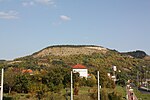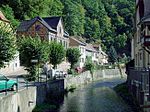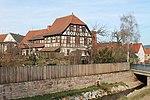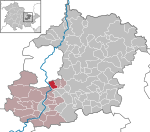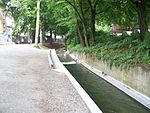Lobeda
Cities in Thuringia
Lobeda is a former independent city in Thuringia, Germany, which is now a district of Jena known as Lobeda-Old Town. It was incorporated in 1946, has just under 2000 inhabitants on an area of 3.36 square kilometers and is located just under 4.5 kilometers south of the city center. Between 1966 and 1986, the Jena prefabricated satellite town of Neulobeda was built southwest of Lobeda, with around 20,000 inhabitants. To better differentiate it from Neulobeda (also a district of Jena), the old Lobeda has been calling itself Lobeda-Old Town (district of Jena) since May 25, 1998.
Excerpt from the Wikipedia article Lobeda (License: CC BY-SA 3.0, Authors).Lobeda
Nikolaus-Theiner-Straße, Jena Lobeda-Altstadt
Geographical coordinates (GPS) Address Nearby Places Show on map
Geographical coordinates (GPS)
| Latitude | Longitude |
|---|---|
| N 50.893055555556 ° | E 11.608888888889 ° |
Address
Nikolaus-Theiner-Straße 11
07747 Jena, Lobeda-Altstadt
Thuringia, Germany
Open on Google Maps
